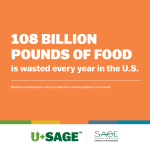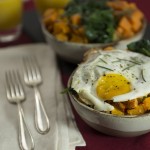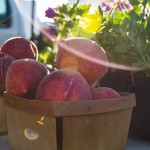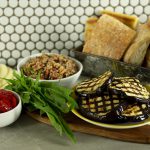All of a sudden, the humble beet has become chic. Beet juice, beet smoothies, beet chips, beet chews, crispy beet salad toppings — there’s no shortage of new beet products on the shelves these days. It’s no wonder, because beets can’t be beat when it comes to their nutritional benefits, sports-enhancing qualities, and innovative culinary applications. (No more puns, promise!)
The powerful red dye component is probably the most notable feature of beets, and although the staining ability is remarkable, that’s not the most impressive function of the red color. That red is a clue to beets’ outstanding nutritional benefits. They’re packed with fiber, vitamins, and minerals — including vitamin C, potassium, naturally occurring dietary nitrates, and antioxidants. The red pigment of beets is from betalains, phytonutrients linked to antioxidant and anti-inflammatory benefits. Studies of beets have shown positive relationships with reducing blood pressure, improving gut and brain health, providing cancer-fighting properties (through those unique betalains), and showing promising benefits for athletic performance.
Here’s the science behind beets’ athletic-enhancing abilities: the naturally occurring dietary nitrates in beets are reduced to nitric oxide. This gas relaxes and widens blood vessels, which improves blood flow. Improved blood flow allows athletes to work harder without as much impact on their oxygen levels. In a study of exercise performance using beetroot juice, there was about a 15% improvement in the time it took athletes to reach exhaustion. For many athletes, this means higher performance for a longer duration. These levels peak about two to three hours after eating beets, so the best time to eat them is about three hours before a workout, practice, or game.
For best selection, choose beets that are firm with vibrant greens; smaller beets will be more tender. There are many varieties of beets to choose from, but you’ll likely be able to find garden beets, golden beets, and Chioggia (also called candy cane or candy-striped) beets at your local grocery store or farmers market. Garden beets are slightly sweet and your white shirt’s worst nightmare because of those betalains. They’re used as a natural food coloring and can even dye hair. Golden beets are, as you could guess, more of a golden color and lack that potent red inside. They tend to be a little sweeter than garden beets and have a less distinctive earthy flavor. Chioggia beets are a favorite because of their interesting striped appearance. They’re the sweetest, and their color doesn’t bleed as much as other varieties’ do. The color can fade if you cook them, so they’re most visually appealing when they’re raw.
Enjoy them raw, pickled, cooked, or canned, and use them to add flavor, nutrients, and color to salads, dips, smoothies, and main dishes. If you’re cooking them, save yourself some time (and stains) by preparing the beet with the skin on — just scrub them well first. Ever have beet hummus? The color itself is exciting for children to try. Don’t forget the greens — you can eat them raw or cooked like any other green.
This is one of our favorite recipes to prepare for the communities we serve. It’s labeled as a Performance Spotlight™ vegetable on our menus. Enjoy!
Harvard Beets
Serves: 6 Prep/Total Time: 30 minutes
Ingredients:1 ½ pounds beets 1/4 tsp salt ¾ cup unsweetened orange juice 1 orange 1 ¼ tsp granulated sugar 1 ¼ tsp cornstarch 1 1/4 tsp water
Preparation:Step 1: Cut off beet greens. Step 2: Scrub beets and leave whole with root ends attached. Boil beets until tender (30 - 45 minutes). Step 3: Drain beets and run under cold water. When cooled, slip skins off or rub with a towel to remove skins and remove root ends. Slice into wedges. Sprinkle with salt. Step 4: Peel and dice orange. Return beets to pot and add orange juice, sugar, and diced orange. Step 5: Dissolve cornstarch in water and add to pot. Bring to a simmer, stirring frequently until thickened.









